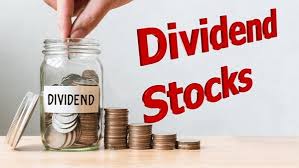In the world of investing, few strategies offer the allure of generating passive income quite like investing in dividend stocks. These financial instruments provide investors with regular cash payments, often without requiring active management or daily attention.
By strategically building a portfolio of dividend-paying stocks, investors can create a steady stream of income that has the potential to grow over time, effectively constructing their own passive income empire.
This comprehensive guide will explore the ins and outs of investing in dividend stocks, providing you with the knowledge and tools needed to embark on your journey towards financial independence through passive income.
Skale Money Key Takeaways
- Dividend stocks offer regular cash payments to shareholders, providing a source of passive income
- Compound interest and dividend reinvestment can significantly boost long-term returns
- Diversification across sectors and companies is crucial for building a robust dividend portfolio
- Key metrics like dividend yield, payout ratio, and dividend growth rate are essential for stock selection
- Regular portfolio monitoring and rebalancing are necessary for maintaining a healthy dividend strategy
- Tax considerations play a vital role in maximizing the benefits of dividend investing
Table of Contents
Understanding Dividend Stocks
What are dividend stocks?
Dividend stocks are shares of companies that distribute a portion of their earnings to shareholders on a regular basis. These companies are typically well-established, financially stable, and generate consistent profits.
How dividends work
When a company declares a dividend, it announces the amount per share and the payment date. Shareholders who own the stock by the ex-dividend date are eligible to receive the dividend payment.
Types of dividends
There are several types of dividends that companies may offer:
- Cash dividends: The most common type, paid directly to shareholders in currency
- Stock dividends: Additional shares given to existing shareholders
- Special dividends: One-time payments often resulting from exceptional profits or asset sales
Dividend yield vs. dividend growth
Dividend yield is the annual dividend payment expressed as a percentage of the stock’s current price. Dividend growth refers to the rate at which a company increases its dividend payments over time. Both factors are important when evaluating dividend stocks.
The Power of Passive Income from Dividends
Investing in dividend stocks can be a powerful way to generate passive income.
Here’s why:
- Compound interest effect: Reinvesting dividends can accelerate portfolio growth
- Potential for consistent cash flow: Regular dividend payments provide steady income
- Inflation hedge: Many companies increase dividends over time, helping to offset inflation
Table: Example of dividend growth over time
| Year | Initial Investment | Annual Dividend | Dividend Yield | Total Value |
| 1 | $10,000 | $300 | 3% | $10,300 |
| 5 | $10,000 | $348 | 3.48% | $11,925 |
| 10 | $10,000 | $403 | 4.03% | $14,802 |
| 20 | $10,000 | $541 | 5.41% | $22,080 |
Note: This example assumes a 3% initial dividend yield and 3% annual dividend growth, with dividends reinvested. It does not account for stock price changes or taxes.
Building Your Dividend Stock Portfolio
Setting clear investment goals
Before investing in dividend stocks, define your objectives:
- Income generation
- Long-term wealth accumulation
- Balancing growth and income
Determining your risk tolerance
Assess your comfort level with market fluctuations and potential dividend cuts.
Diversification strategies
- Spread investments across multiple sectors
- Include a mix of high-yield and dividend growth stocks
- Consider geographic diversification
Sectors known for strong dividends
- Utilities
- Consumer staples
- Real estate (REITs)
- Healthcare
Balancing dividend yield and growth potential
Aim for a mix of stocks that offer current income and those with potential for future dividend increases.
Researching and Selecting Dividend Stocks
Key metrics to consider
- Dividend yield
- Payout ratio
- Dividend growth rate
- Earnings growth
- Debt-to-equity ratio
Red flags to watch out for
- Unsustainably high dividend yields
- Declining earnings or revenue
- Increasing debt levels
- Inconsistent dividend payment history
Tools and resources for stock research
- Financial websites (e.g., Yahoo Finance, Morningstar)
- Company investor relations pages
- Stock screeners
- Financial news and analysis platforms
Table: Comparison of popular dividend stock screening tools
| Tool | Free/Paid | Key Features |
| Finviz | Both | Customizable filters, visual stock charts |
| Seeking Alpha | Both | Dividend grades, earnings forecasts |
| Simply Safe Dividends | Paid | Dividend safety scores, portfolio management tools |
| YCharts | Paid | Comprehensive data, custom watchlists |
Dividend Reinvestment Plans (DRIPs)
How DRIPs work
DRIPs automatically reinvest cash dividends to purchase additional shares of the stock, often at a discount and without commission fees.
Advantages of DRIPs
- Automated investing
- Potential cost savings
- Accelerated compounding
Potential drawbacks
- Less flexibility in investment choices
- Potential tax complications
- May lead to over-concentration in certain stocks
Setting up a DRIP
- Contact your broker or the company’s investor relations department
- Enroll in the DRIP program
- Monitor and adjust as needed
Tax Considerations for Dividend Investors
Qualified vs. non-qualified dividends
Qualified dividends are taxed at lower capital gains rates, while non-qualified dividends are taxed as ordinary income.
Tax-advantaged accounts for dividend investing
- Traditional and Roth IRAs
- 401(k) plans
- Health Savings Accounts (HSAs)
Foreign dividend tax implications
Be aware of potential withholding taxes on dividends from international stocks.
Strategies to minimize tax impact
- Hold dividend stocks in tax-advantaged accounts
- Consider municipal bonds for tax-free income
- Harvest tax losses to offset dividend income
Monitoring and Rebalancing Your Dividend Portfolio
Regular portfolio review
Conduct quarterly or semi-annual reviews of your dividend portfolio.
When to sell a dividend stock
- Dividend cut or elimination
- Deteriorating company fundamentals
- Better opportunities elsewhere
- Portfolio rebalancing needs
Rebalancing strategies
- Threshold rebalancing: Adjust when allocations drift beyond set limits
- Calendar rebalancing: Review and adjust at set intervals
- Combination approach: Use both threshold and calendar methods
Adapting to changing market conditions
Stay informed about economic trends, interest rates, and sector performance to make informed portfolio decisions.
Scaling Your Passive Income Empire
Reinvesting vs. living off dividends
Determine whether to reinvest dividends for growth or use them for current income based on your financial goals.
Dollar-cost averaging strategy
Consistently invest a fixed amount in dividend stocks to reduce the impact of market volatility.
Leveraging dividend growth
Focus on companies with a history of consistently increasing their dividends.
Diversifying income streams beyond stocks
Consider other passive income sources:
- Real estate investment trusts (REITs)
- Bonds
- Peer-to-peer lending
- Rental properties
Common Mistakes to Avoid in Dividend Investing
- Chasing yield: Don’t prioritize high yields over company quality
- Neglecting company fundamentals: Look beyond the dividend to assess overall financial health
- Lack of diversification: Avoid concentrating too heavily in a single stock or sector
- Ignoring total return: Consider both dividend income and potential capital appreciation
- Failing to adapt to changing market conditions: Regularly review and adjust your strategy
Conclusion
Investing in dividend stocks offers a compelling path to building a passive income empire. By understanding the fundamentals of dividend investing, carefully selecting stocks, and implementing sound portfolio management strategies, you can create a reliable stream of income that has the potential to grow over time.
Remember that successful dividend investing requires patience, discipline, and ongoing education. Stay informed about market trends, continuously assess your portfolio, and be prepared to adapt your strategy as needed.
With dedication and a long-term perspective, you can harness the power of dividend stocks to achieve your financial goals and build lasting wealth.
Start your journey towards financial independence today by putting these principles into action and watching your passive income empire grow.
FAQs
What is a good dividend yield to look for?
A “good” dividend yield varies depending on market conditions and individual goals. Generally, a yield between 2% and 6% is considered attractive, balancing income potential with sustainability.
How often are dividends typically paid?
Most U.S. companies pay dividends quarterly, but some pay monthly or semi-annually. The frequency can vary in other countries.
Can dividends be cut or eliminated?
Yes, companies can reduce or eliminate dividends, especially during financial difficulties. This highlights the importance of researching a company’s financial health and dividend history.
Are dividend stocks suitable for young investors?
Yes, dividend stocks can be suitable for young investors, particularly for long-term wealth building through dividend reinvestment and compound growth.
How many dividend stocks should I own for proper diversification?
While there’s no universal number, owning 20-30 dividend stocks across various sectors can provide good diversification. However, this can vary based on individual circumstances and investment strategy.
Author: Cosmas Mwirigi
Cosmas Mwirigi is an established freelance writer with over five years of experience and the founder of Skalemoney.com. Cosmas Mwirigi has been published on PV-Magazine, Slidebean, Bridge Global, Casinos.com, Gambling.com, and Reverbico among many other websites.
Cosmas Mwirigi is an expert writer in iGaming, B2B, SaaS, Finance, digital marketing and Solar renewable energy. To contact him for his services, connect with him on his LinkedIn
![]()




